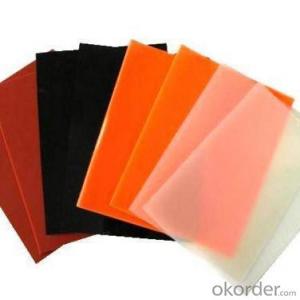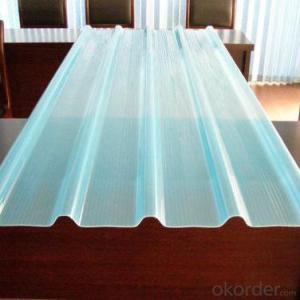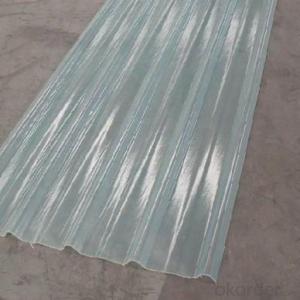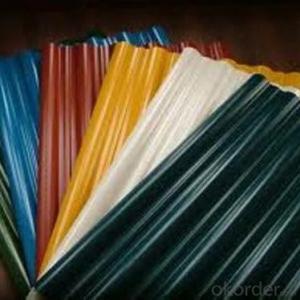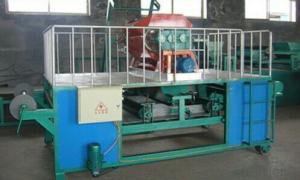FRP pultruded grating with Excellent electromagnetism property and high quality for sales
- Loading Port:
- Tianjin
- Payment Terms:
- TT OR LC
- Min Order Qty:
- 4000 m.t.
- Supply Capability:
- 100000 m.t./month
OKorder Service Pledge
OKorder Financial Service
You Might Also Like
Item specifice
Pultruded grating is made by a particular assembly process, which using “I” shape as its main load-bearing and special rod to go through the bearing bar. Pultruded grating include the standard grating and the custom grating, the custom grating can be designed to meet customer’s requirement or special using condition by changing the shape, size and space of the bearing bars, the surface can be covered with lozenge panel, grit panel, or added the anti-slippery sand directly.
FRP pultruded grating has the most characteristics of molded grating, but it has its distinct advantages, it has very high fiberglass content in the loading direction, so it has very high load capability, it has more superiority when used at wide span, so that the basic support will be decreased and the project cost will be reduced accordingly.
SPECIFICATION
The standard space between two crossbars is 6 inch or 12 inch.
Thickness (mm) | Bar width (mm) | Open space (mm) | Open rate (%) | Approx weight (kg/m |
25.4 | 15.2 | 22.8 | 60 | 13.2 |
25.4 | 15.2 | 15.2 | 50 | 15.9 |
25.4 | 15.2 | 10.1 | 40 | 18.5 |
25.4 | 40 | 10.8 | 21 | 14.5 |
38.1 | 15.2 | 22.8 | 60 | 15.8 |
38.1 | 15.2 | 15.2 | 50 | 19.1 |
38.1 | 15.2 | 10.1 | 40 | 22.4 |
50.8 | 25.4 | 25.4 | 50 | 16.6 |
50.8 | 25.4 | 12.7 | 33 | 21.1 |
FEATURES
a. Anti-corrosion and anti-rust
b. Light weight and high strength
c. Anti-flammable
d. Anti- fatigue
e. Safe and anti-slippery
f. Anti-ageing
g. Easy of maintenance
h. Excellent electromagnetism property
i. Good economic benefit
FIELDS SERVED
Sewage treatment,
water supply and drainage,
chemical industry,
oil industry,
power engineering,
pulp and paper,
construction engineering,
spinning, marine engineering.
APPLICATION
Operation terrace,
stair walkway,
ground floor,
trench cover,
sidewalk,
foot bridge,
equipment safety fence,
scaffold.
COMPANT DESCRIPTION
CNBM,China National Building Materials Group is a state-owned enterprise in charge of administrative affairs in china building materials industry. Established in 1984, CNBM is a large group corporation of building materials with total assets of 25 billion RMB and a total staff of 30,000.CNBM now owns 200 subordinating firms of solely owned and joint-venture companies.
CNBM International Corporation is one subsidiary of CNBM, we focus on offering good-quality products,professional service and complete solution to our customers. Strong delivery capacity, advanced technology& management, strong financing capability and excellent after-sale service are our advantages in sharing international market.
FAQ
Q1.What's your sample policy?
A:We can supply the sample if we have ready parts in stock, but the customers have to pay the courier cost.
Q2.Can you produce according to the samples?
A: Yes, we can produce or modify the products according to your request.
Q3.How do you deliver the goods to my country?
A:We can provide international express, such as DHL, EMS, UPS, FedEx, etc. We select air freight and sea freight upon your requests. Quotations if without mentioning the shipping costs are shipping fee excluded.
Q4.How much does it cost to ship to my country?
A:When you goanna to place an order, please contact us, because different country has different freight.
Q5.How to get the catalogue?
A:please contact us and tell us what you are looking for.
We will try our best to meet customers' demands. Welcome you come here to visit us. We sincerely welcome partners around the world to establish business cooperation with us on the basis of mutual trust, benefit and development.
PICTURES
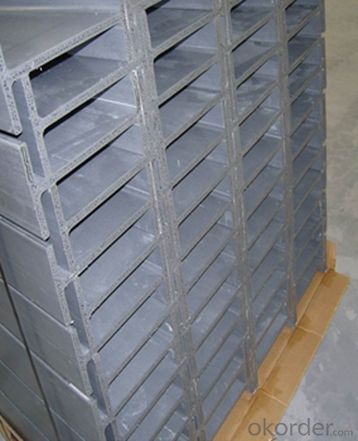
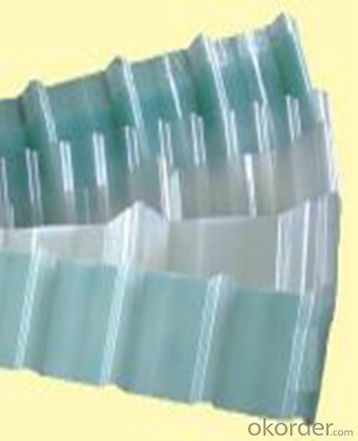
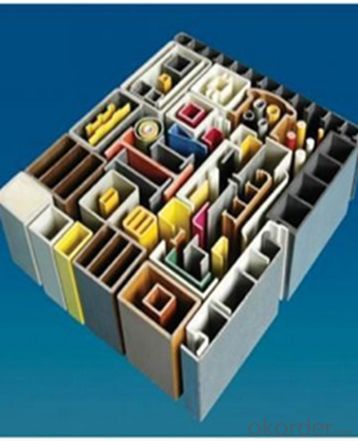
- Q:FRP pultrusion process?
- Pultruded glass steel is mainly using unsaturated polyester resin, Yuezhanla extrusion molding process more than 90% in addition to the amount of resin, epoxy resin, vinyl resin, thermosetting resin, propionic acid modified phenolic resin, flame retardant resin etc..
- Q:Are FRP pultrusion profiles resistant to sulfuric acid?
- FRP pultrusion profiles display a notable resistance to sulfuric acid and this corrosion resistance is a key advantage they hold over traditional materials like steel or concrete. Sulfuric acid, known for its highly corrosive nature, poses no threat to FRP pultrusion profiles due to the inherent properties of the composite materials used in their construction. The primary reason behind the corrosion resistance of FRP profiles lies in the resin matrix that encases the reinforcing fibers. The commonly utilized resins in pultrusion, namely polyester, vinyl ester, and epoxy, exhibit remarkable chemical resistance, including resistance to sulfuric acid. However, it is essential to acknowledge that the resistance of FRP pultrusion profiles to sulfuric acid can vary based on multiple factors. The concentration and temperature of the acid, as well as the specific resin formulation employed in the profile, can impact the overall resistance. In scenarios involving highly concentrated acid or elevated temperatures, it is advisable to consult the manufacturer or supplier to ensure that the specific FRP profile meets the necessary resistance requirements. On the whole, FRP pultrusion profiles offer a high level of resistance to sulfuric acid, making them apt for a wide range of applications in industries where this corrosive substance may be present, such as chemical processing, wastewater treatment, or mining.
- Q:Are FRP pultrusion profiles resistant to alkaline substances?
- Yes, FRP pultrusion profiles are generally resistant to alkaline substances. The use of fiberglass reinforced polymer (FRP) in pultruded profiles provides excellent resistance to a wide range of chemicals, including alkaline substances. The resin used in the manufacturing process is typically a thermosetting polymer, such as polyester or vinyl ester, which offers high resistance to alkaline solutions. Moreover, the reinforcement of fiberglass imparts additional strength and durability to the profiles, making them highly resistant to corrosion and degradation from alkaline substances. However, it is important to note that the specific resistance of FRP pultrusion profiles to alkaline substances may vary depending on the specific resin formulation and manufacturing process. Therefore, it is recommended to consult with the manufacturer or supplier to ensure the profiles meet the desired resistance requirements for specific alkaline environments.
- Q:Can FRP pultrusion profiles be used in the aerospace and aviation industry?
- Indeed, the aerospace and aviation industry can utilize FRP pultrusion profiles. These profiles offer an exceptional ratio of strength to weight, corrosion resistance, and flexibility in design, making them suitable for a wide range of applications in this field. A primary advantage of FRP pultrusion profiles is their ability to provide high structural integrity while maintaining a low weight. This is crucial in aerospace and aviation, where reducing weight is a top priority. By being lightweight, FRP profiles can contribute to fuel efficiency, improved performance, and increased payload capacity. Moreover, FRP pultrusion profiles display excellent resistance to corrosion, including chemicals, moisture, and UV radiation. This makes them highly suitable for use in aircraft and aerospace systems that often face harsh environmental conditions. Unlike traditional metallic materials, FRP profiles can withstand corrosive agents and maintain their structural integrity for extended periods. This reduces maintenance needs and enhances the durability of aircraft components. Additionally, the design flexibility of FRP pultrusion profiles allows engineers to create complex shapes and geometries, enabling customization to meet specific requirements. This design versatility opens up opportunities for innovative solutions in aerospace and aviation applications, such as structural components, aircraft interiors, radomes, fairings, and more. It is important to note that FRP pultrusion profiles have already been successfully employed in the aerospace and aviation industry for various applications, including wing spars, stabilizers, galleys, interior panels, and cargo containers. Their proven track record demonstrates their reliability and performance in demanding environments. In conclusion, FRP pultrusion profiles are highly suitable for use in the aerospace and aviation industry due to their high strength-to-weight ratio, corrosion resistance, and design flexibility. Their utilization can contribute to lighter, more efficient, and durable aircraft components, making them a viable choice for various applications in this sector.
- Q:Are FRP pultrusion profiles resistant to electrical arcing?
- Yes, FRP pultrusion profiles are highly resistant to electrical arcing due to their non-conductive nature, making them a safe choice for applications where electrical arcing is a concern.
- Q:Are FRP pultrusion profiles electrically conductive?
- Typically, FRP pultrusion profiles lack electrical conductivity due to the utilization of a blend of fiberglass reinforcement and a thermosetting resin matrix. These components offer exceptional insulation qualities. The inherent non-conductive nature of the fiberglass reinforcement is further amplified by the resin matrix. Consequently, FRP pultrusion profiles find frequent application in situations where electrical conductivity is undesirable or poses safety hazards. Nevertheless, it is noteworthy that specific modifications or additions can be implemented during the pultrusion process to introduce electrical conductivity, if needed for particular applications.
- Q:Are FRP pultrusion profiles resistant to earthquakes?
- FRP (Fiber Reinforced Polymer) pultrusion profiles can offer certain advantages when it comes to earthquake resistance. The inherent properties of FRP materials, such as high strength-to-weight ratio, flexibility, and damping characteristics, contribute to their ability to withstand seismic events. Additionally, FRP pultrusion profiles possess excellent fatigue resistance, which is crucial during earthquake-induced vibrations and aftershocks. One of the key advantages of FRP pultrusion profiles is their lightweight nature. Compared to traditional building materials like steel or concrete, FRP profiles are significantly lighter, reducing the overall mass of the structure. This weight reduction minimizes the inertia forces acting on the building during an earthquake, thus decreasing the potential for damage. Moreover, FRP materials exhibit high flexibility and ductility, allowing them to deform and absorb energy during seismic events. This flexibility helps in distributing the seismic forces more uniformly throughout the structure, reducing localized stress concentrations and enhancing the overall resilience of the building. The damping characteristics of FRP also contribute to dissipating the energy generated by an earthquake, further safeguarding the structure against damage. However, it is important to note that the earthquake resistance of any structure depends on several factors, including the design, construction, and adherence to relevant building codes and regulations. Proper engineering analysis and design must be employed to ensure that the FRP pultrusion profiles are appropriately incorporated into the structure to withstand the expected seismic forces. In summary, while FRP pultrusion profiles offer certain advantages in earthquake resistance, their effectiveness in protecting against seismic events relies on proper design and construction practices. It is crucial to work with experienced professionals and follow established guidelines to ensure the optimal performance of FRP structures during earthquakes.
- Q:How is FRP pultrusion different from other manufacturing processes?
- FRP pultrusion is different from other manufacturing processes in its unique method of producing fiber-reinforced polymer (FRP) profiles. Unlike traditional processes like extrusion or injection molding, pultrusion involves pulling continuous fibers through a resin bath and then into a heated die, where they are cured and shaped into the desired profile. This continuous and automated process allows for the production of strong, lightweight, and corrosion-resistant FRP profiles with consistent mechanical properties. Additionally, pultrusion enables the incorporation of various fiber orientations and resin systems, making it highly versatile for customized applications.
- Q:Are FRP pultrusion profiles resistant to moisture?
- Yes, FRP pultrusion profiles are highly resistant to moisture due to the inherent properties of fiberglass and the resin matrix used in their production. This resistance makes them an excellent choice for applications where moisture exposure is a concern, such as outdoor structures, marine environments, and infrastructure exposed to wet conditions.
- Q:Can FRP pultrusion profiles be used in the aerospace and aviation industry?
- Indeed, the aerospace and aviation industry can utilize FRP pultrusion profiles. These profiles offer an exceptional ratio of strength to weight, corrosion resistance, and flexibility in design, making them suitable for a wide range of applications in this field. A primary advantage of FRP pultrusion profiles is their ability to provide high structural integrity while maintaining a low weight. This is crucial in aerospace and aviation, where reducing weight is a top priority. By being lightweight, FRP profiles can contribute to fuel efficiency, improved performance, and increased payload capacity. Moreover, FRP pultrusion profiles display excellent resistance to corrosion, including chemicals, moisture, and UV radiation. This makes them highly suitable for use in aircraft and aerospace systems that often face harsh environmental conditions. Unlike traditional metallic materials, FRP profiles can withstand corrosive agents and maintain their structural integrity for extended periods. This reduces maintenance needs and enhances the durability of aircraft components. Additionally, the design flexibility of FRP pultrusion profiles allows engineers to create complex shapes and geometries, enabling customization to meet specific requirements. This design versatility opens up opportunities for innovative solutions in aerospace and aviation applications, such as structural components, aircraft interiors, radomes, fairings, and more. It is important to note that FRP pultrusion profiles have already been successfully employed in the aerospace and aviation industry for various applications, including wing spars, stabilizers, galleys, interior panels, and cargo containers. Their proven track record demonstrates their reliability and performance in demanding environments. In conclusion, FRP pultrusion profiles are highly suitable for use in the aerospace and aviation industry due to their high strength-to-weight ratio, corrosion resistance, and design flexibility. Their utilization can contribute to lighter, more efficient, and durable aircraft components, making them a viable choice for various applications in this sector.
1. Manufacturer Overview |
|
|---|---|
| Location | |
| Year Established | |
| Annual Output Value | |
| Main Markets | |
| Company Certifications | |
2. Manufacturer Certificates |
|
|---|---|
| a) Certification Name | |
| Range | |
| Reference | |
| Validity Period | |
3. Manufacturer Capability |
|
|---|---|
| a)Trade Capacity | |
| Nearest Port | |
| Export Percentage | |
| No.of Employees in Trade Department | |
| Language Spoken: | |
| b)Factory Information | |
| Factory Size: | |
| No. of Production Lines | |
| Contract Manufacturing | |
| Product Price Range | |
Send your message to us
FRP pultruded grating with Excellent electromagnetism property and high quality for sales
- Loading Port:
- Tianjin
- Payment Terms:
- TT OR LC
- Min Order Qty:
- 4000 m.t.
- Supply Capability:
- 100000 m.t./month
OKorder Service Pledge
OKorder Financial Service
Similar products
New products
Hot products
Hot Searches
Related keywords
